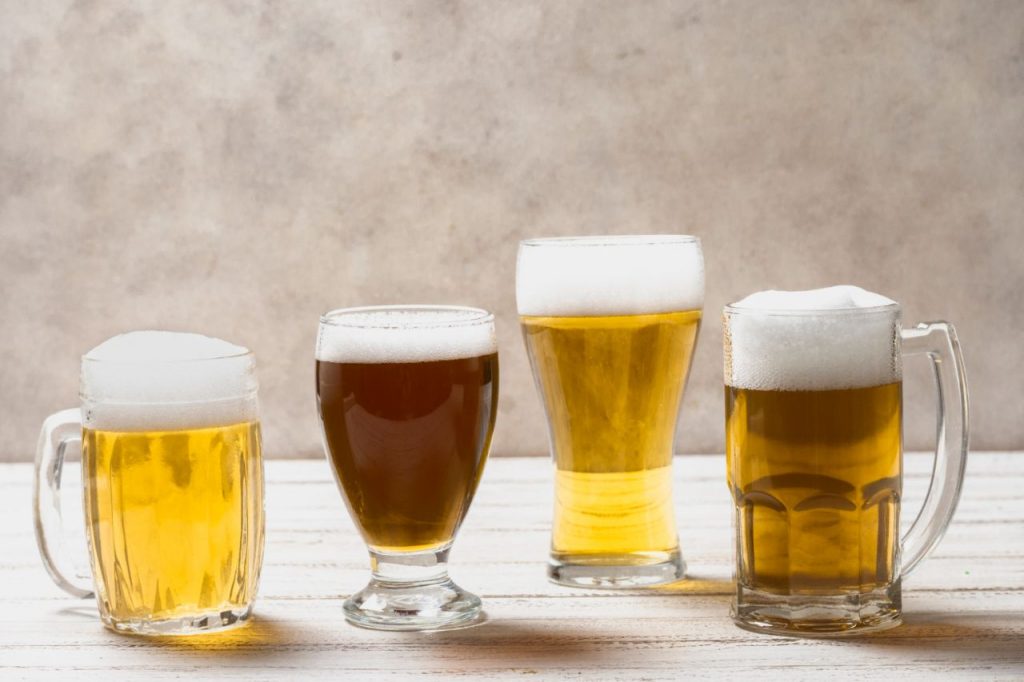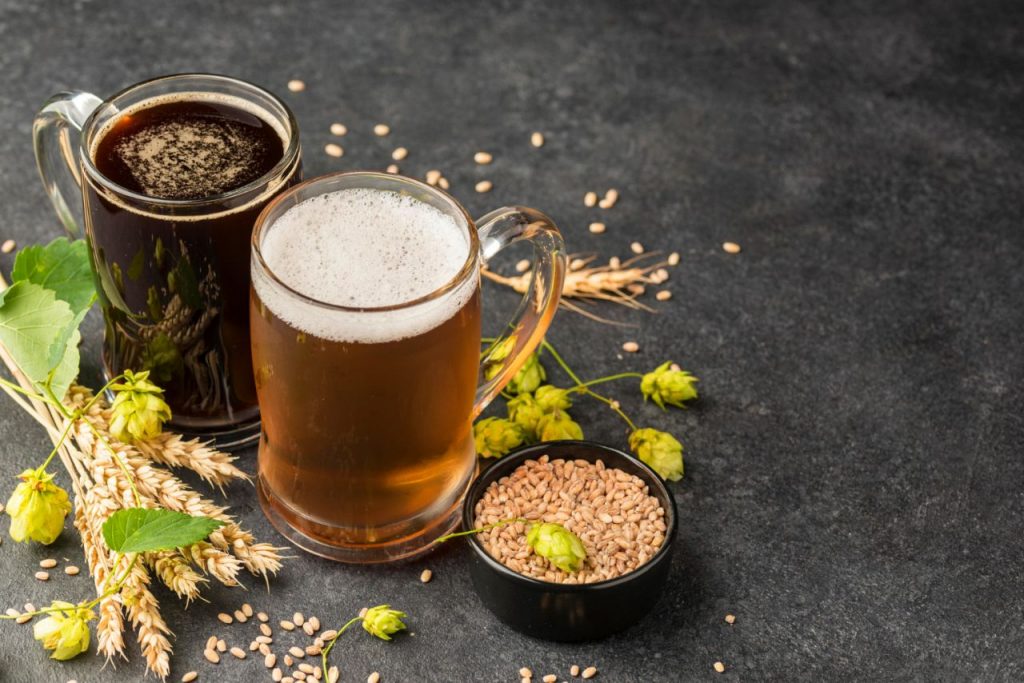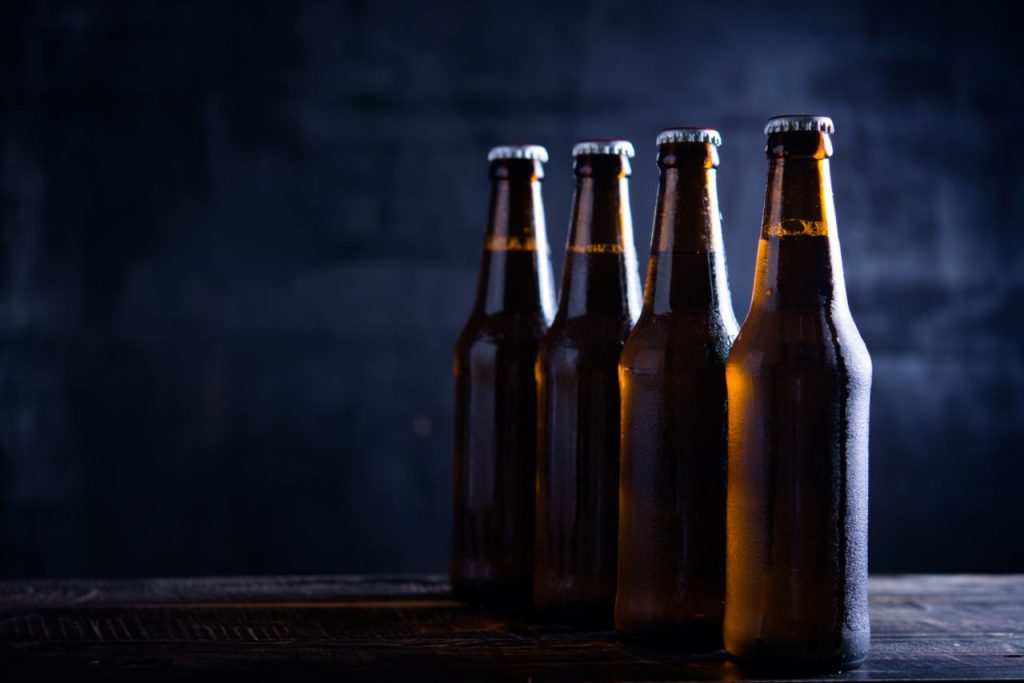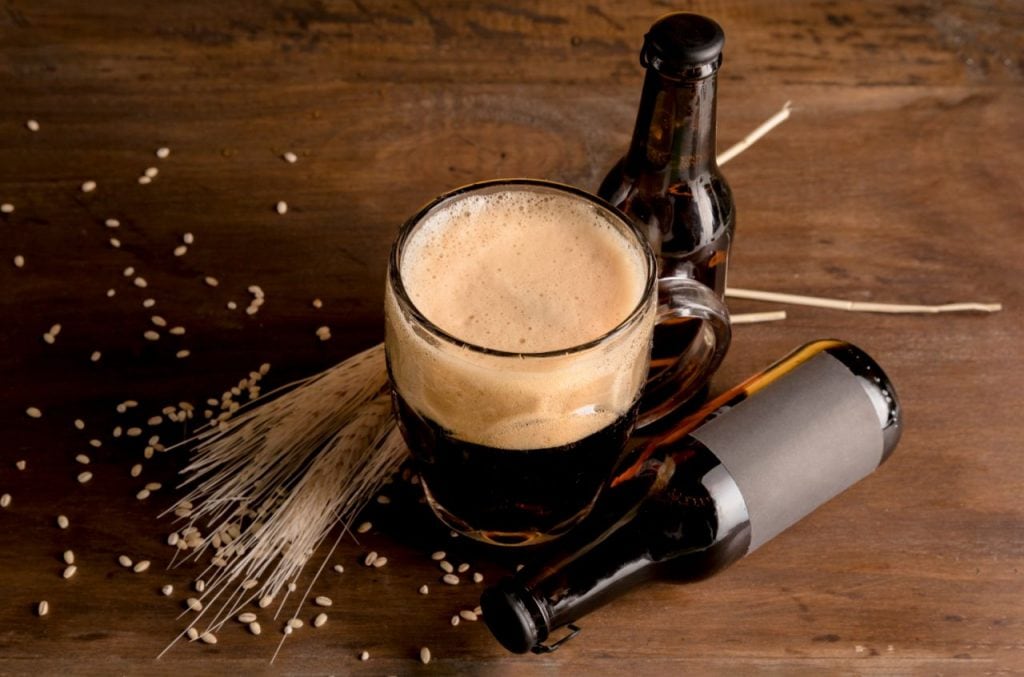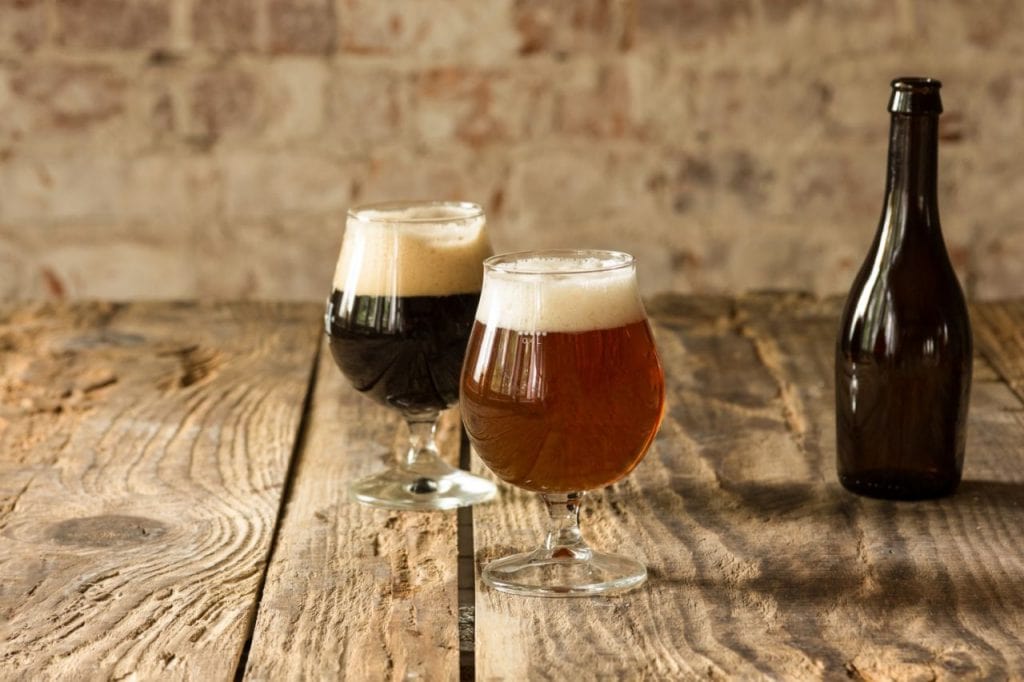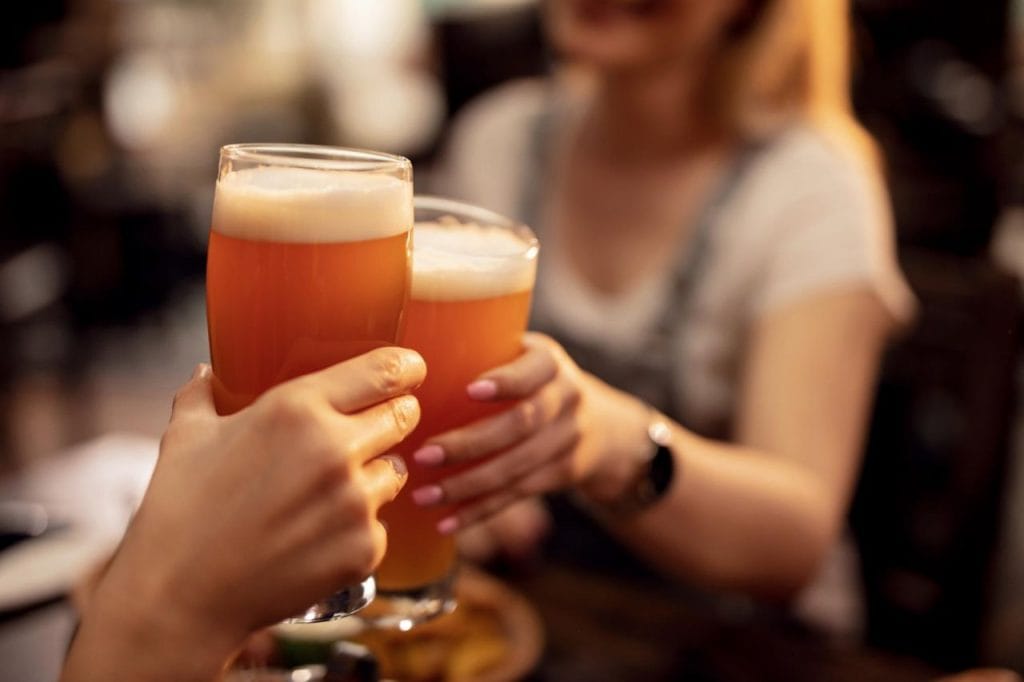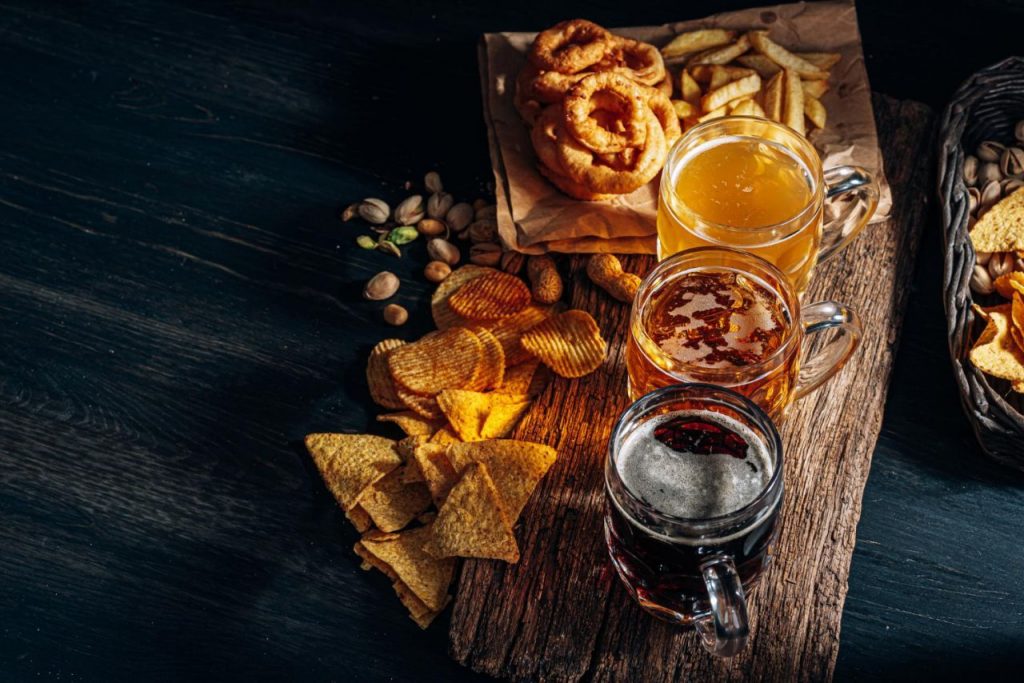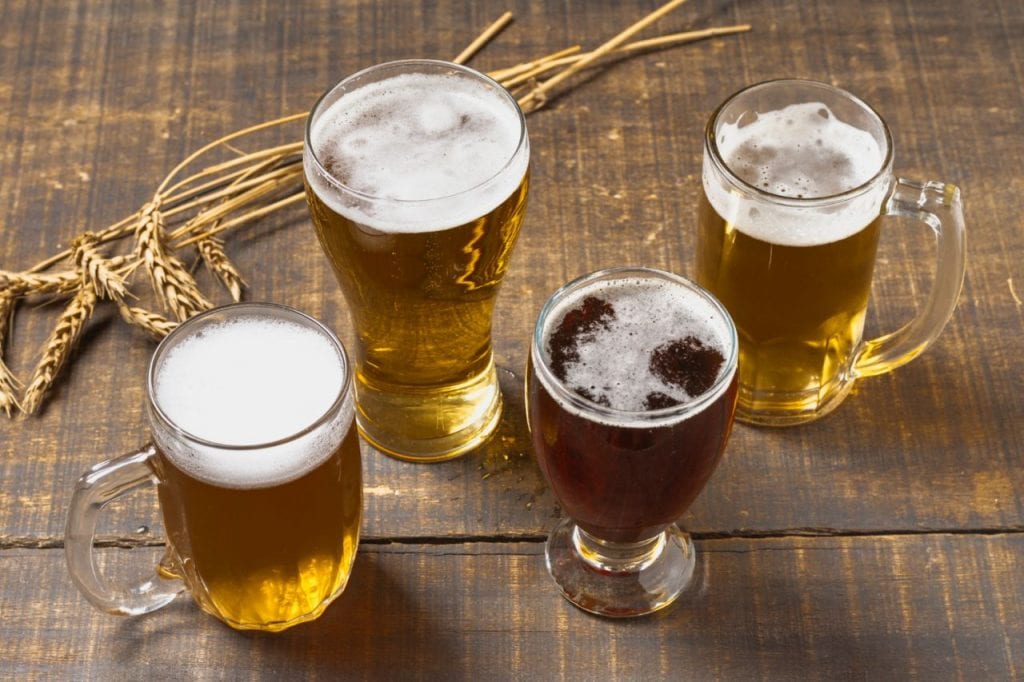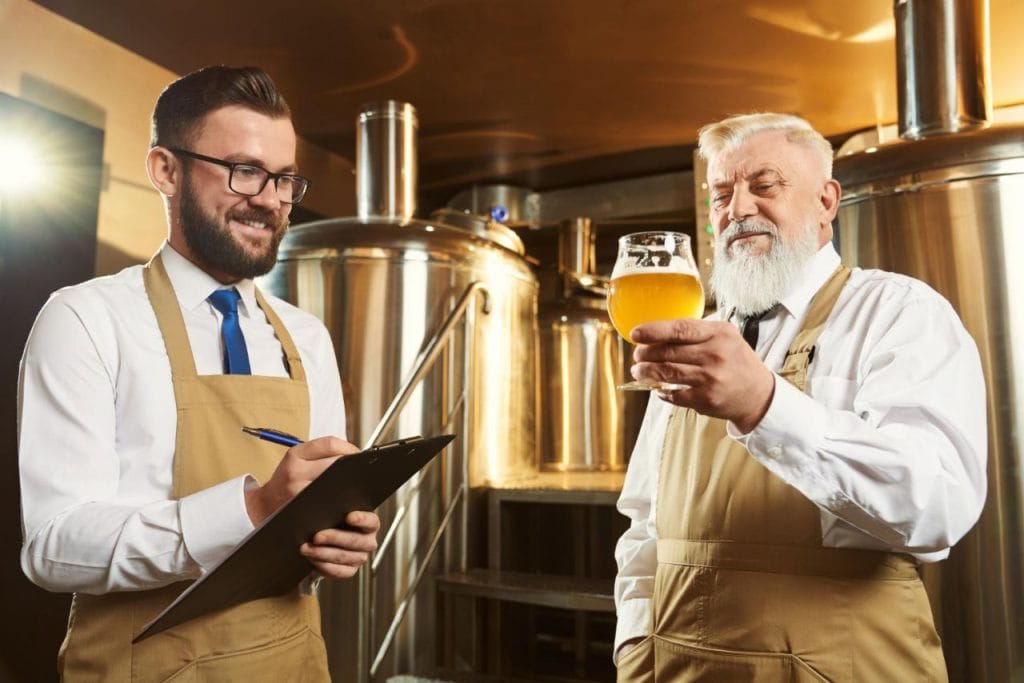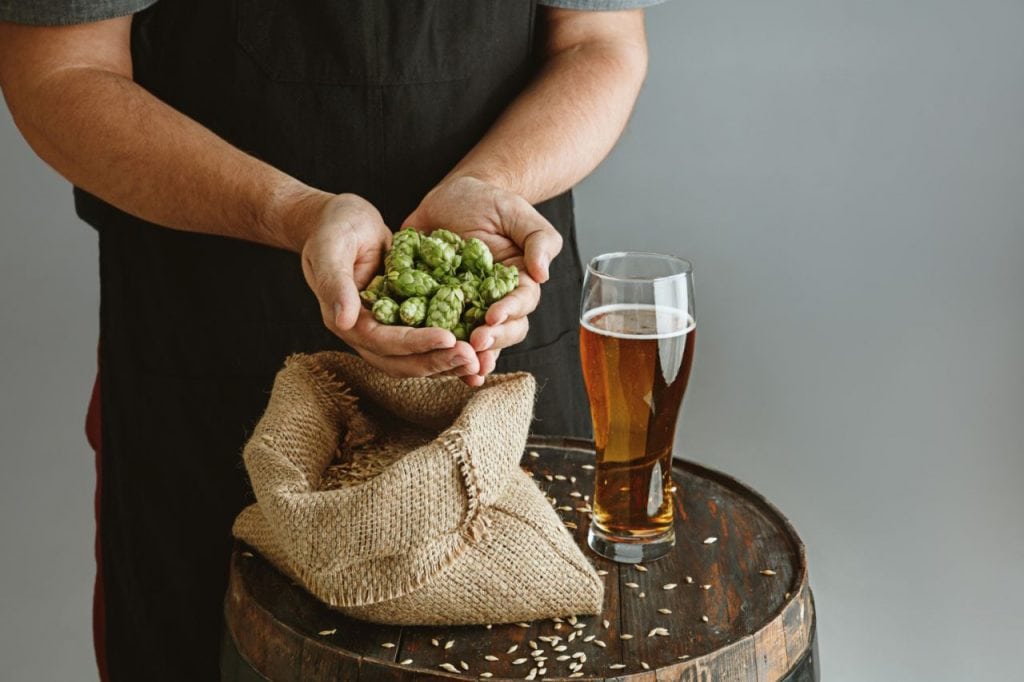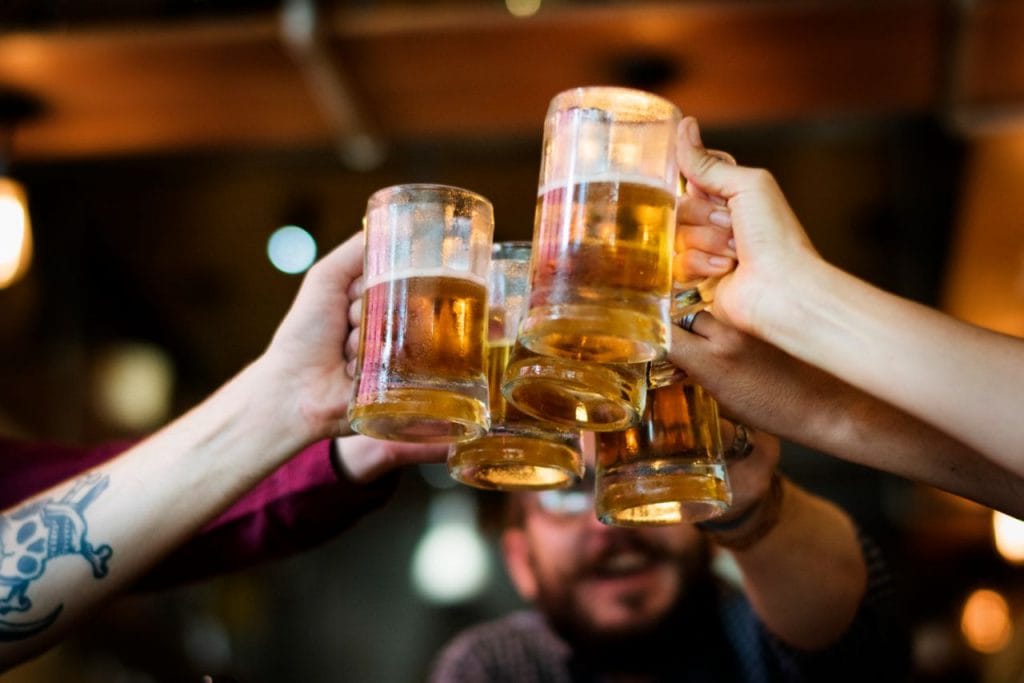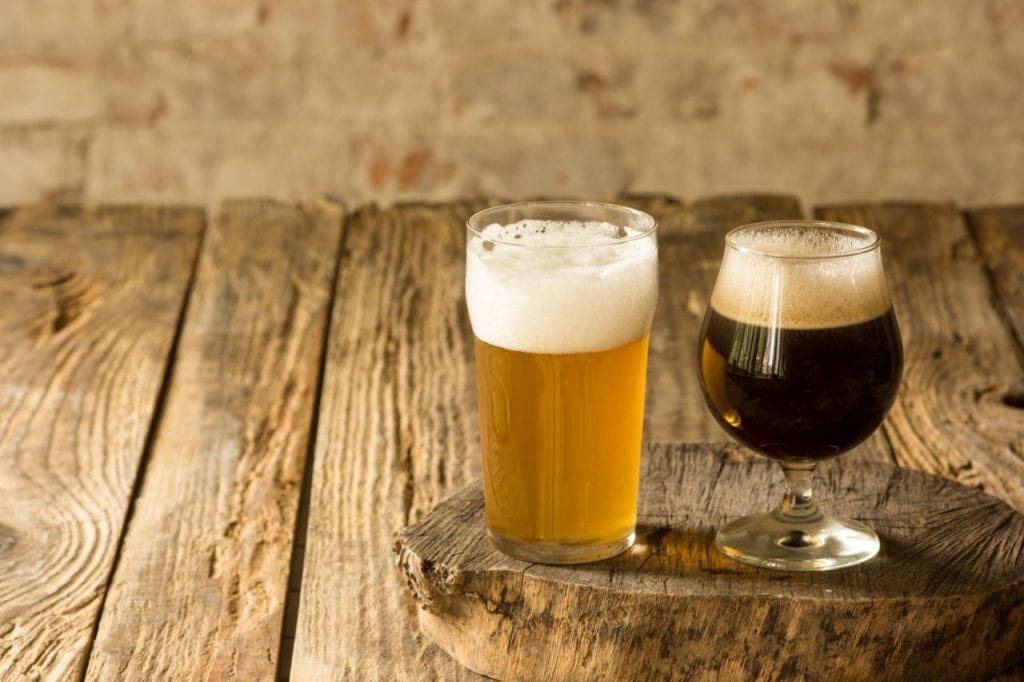While holding a bottle of that coloured, intoxicating liquor, you must have wondered how and where it was made, once regarded as a gift from God by so many ancient civilizations. Of course, beer is manufactured in a brewery or beer factory; however, do the breweries have a prototype or standard design?
Is there a standard procedure every brewery must follow to produce the favourite beverage of so many people, especially young people? Don't worry about your ignorance; we'll go over the various types of breweries in this post!
Do you know what a farm brewery or a craft brewery is? Do you know the difference between a microbrewery and a microbrewery? You'll discover how and where this intoxicating juice is made, the breweries' classification criteria, and how to obtain various flavours and tastes. Continue reading to learn everything you need about this drink that could be as old as a human civilization!
Tell us about the biggest brewers who bring God's gift to millions of people, making their lives colourful, even flashy, before we get into the different types of breweries! According to available data, the top four beer companies control more than half of the market: Anheuser-Busch InBev, SABMiller, Heineken International, and Carlsberg. So you owe them your heartfelt gratitude! The largest brewery is the Belgian-Brazilian Anheuser-Busch InBev, followed by the Danish Carlsberg group.
Breweries are generally classified based on their capacity or brewing style. They can range in size from ultra-small to very large, from traditional to innovative or non-traditional. This classification may vary by region, but we will attempt to define some commonly used terms.
Various Types Of Breweries?
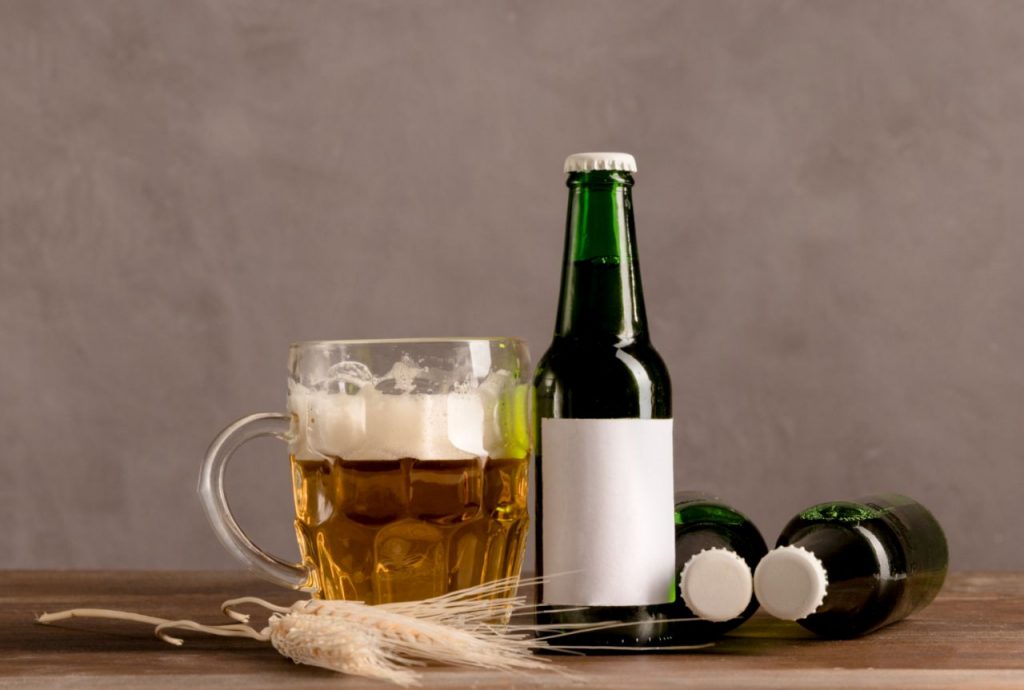
When discussing craft beer and micro-brewed beer, there are similarities and differences. However, because terms are so perplexing, different people interpret them differently.
Microbrewery
The microbrewery is based on the number of beers produced in a calendar year (in barrels). They can produce up to 15,000 barrels of beer per year, with 75 per cent of the beer sold outside the brewery.
Although 75% or more of the beer in the microbrewery must be sold outside the brewery, some microbreweries will still sell beer to beer consumers in small tasting rooms or bars. Microbrewery complete sales in one of three ways:
- Brewers sell to wholesalers, who in turn sell to retailers, who in turn sell to consumers.
- Brewers act as wholesalers and sell to retailers, who sell to consumers.
- Brewers sell directly to consumers via takeout or sales at on-site bars or restaurants.
Nano Brewery
The size of the brewery is what distinguishes a nanobrewery from a microbrewery. A nano-brewery is any brewery producing batches of three barrels or less. In addition, a newly enacted New Hampshire law broadened the definition of a nano-brewery. As a result, a nano-brewery produces fewer than 2,000 barrels per year.
Brewpub
The brewpub is a combination of restaurants and breweries. It must sell at least 25% of its beer on-site and serve delicious food to customers. Brewpubs primarily use beer to provide more options for consumers in restaurants or bars. But, of course, where permitted by law, brewpubs will sell beer in the same way that other regions do.
Brewpubs have the distinct advantage of being able to serve beer directly from the brewery's storage tanks. Because they have a strong industrial visual appeal, these large tanks are frequently used as the aesthetic cornerstone of businesses. The presence of cans also creates an authentic atmosphere, which many customers appreciate when accepting craft beer. In addition, the layout of a brewpub frequently demonstrates how beer is brewed and the technical skill required to produce a quality beverage.
When legal, many brewpubs also provide takeaway services and establish distributors in other regions to help build their brands.
Taproom Brewery
A taproom brewery is very similar to a brewpub in that it must sell more than 25 per cent of its beer on the premises. The primary distinction between a taproom and a brewpub is that the latter does not offer any food service. Naturally, just like in other areas, beer may be purchased at taprooms.
Regional Brewery
A brewery that only serves beer in a specific part of the country or the world is known as a regional brewery. Breweries that serve a specific region are classified under one of the more general umbrellas. As stated by the Association of Brewers, the annual production of a regional brewery might range from 15,000 to 6,000,000 barrels of beer.
craft brewery
Craft Brewery
To be considered a craft brewery, a facility must produce no more than 2 million gallons of craft beer annually and be privately held. Craft breweries, as opposed to microbreweries, are subject to more stringent regulations on the technology used in beer production.
Craft breweries must use at least fifty per cent conventional malt in their beers rather than cereals like oats, barley, and wheat.
The fact that these breweries view beer production as an art form is where the word "craft brewing" derives from in the context of craft beer. They do not wish to engage in competition with more established breweries. Because of their size and autonomous ownership, craft breweries must maintain frequent communication with their clientele.
They are far more concerned about the flavour and scent of craft beer, and they are not very concerned about the possibility of making enormous profits.
The craft beer brewing industry takes great pride in its high-quality raw materials, reliable equipment, and one-of-a-kind brewing procedures. As a result, craft beer typically employs high-quality raw materials for brewing in small batches, as opposed to the big-scale and large-batch production of beer typical of large breweries.
5 Surprising Health Benefits of Beer
Do you enjoy relaxing with a glass of iced coffee? You may be taking in more nutrients than you realize. Antioxidants, vitamins, and minerals are provided by the components that go into making beer, such as cereals, yeast, hops, and water.
In addition, studies have shown a link between moderate beer consumption (defined as no more than one 12-ounce glass of beer with 5% alcohol by volume a day for women and no more than two glasses of beer a day for men) and a healthy heart and bones, a lower risk of developing diabetes, and enhanced psychological and cognitive well-being.
So let's raise a glass to the most recent research on the positive effects of moderate beer drinking on one's nutrition and health:
Beer contains nutrients.
Beer comprises soluble fibre and trace amounts of calcium, iron, magnesium, phosphorus, potassium, sodium, zinc, copper, manganese, selenium, fluoride, and silicon. It is composed of 90 per cent water.
Joy Dubost, a registered dietitian in the District of Columbia who is also a beer steward with the Master Brewers Association of the Americas, says that "beer also has a unique antioxidant profile," with the majority of the antioxidants coming from the malt and the remaining antioxidants coming from the hops.
The elements that make beer all contribute to its unique nutritious profile.
Beer may boost bone health.
Beer contains dietary silicon, which is essential for forming and developing bone and connective tissues. Dietary silicon may be found in most beers. A study that was published in the Journal of the American Medical Association found that moderate drinkers had a lower risk of osteoporosis by 38 per cent compared to non-drinkers, and another study that was published in Osteoporosis International found that moderate drinkers had a lower risk of hip fractures by 20 per cent compared to non-drinkers. Both of these studies were published in the same year.
Therefore, it has been hypothesized that the dietary silicon present in beer may be partially responsible for its bone-protective properties.
Beer may improve cholesterol.
A study conducted in China on 80,000 healthy people and presented at the American Heart Association scientific sessions in 2016 indicated that moderate drinking was associated with a slower decline in good cholesterol over time. The research was conducted in China. However, one exception to the rule that more is always better: According to the study's findings, excessive drinking nullified this benefit.
Beer may reduce the risk of Type 2 diabetes.
Multiple studies have found a link between moderate alcohol use and the risk of type 2 diabetes that is lowered by thirty per cent when compared to not drinking alcohol at all or drinking heavily. On the other hand, the question of why that appears to be the case is currently being investigated.
Beer may boost cognitive and psychological health.
Research on Parkinson's disease reveals that light to moderate drinking in the middle to late age is related to less cognitive loss than either not drinking at all or heavy drinking. This is in contrast to not drinking at all or drinking a lot. The factors that led to this association are not completely understood now. Beer consumption has been linked to positive psychological effects, particularly in moderation. According to a number of studies, it has the potential to assist in the alleviation of stress and anxiety as well as the enhancement of sensations of well-being.
Advantages and Disadvantages of Beer
Beer is a type of alcoholic beverage that is drunk by a significant number of people all over the world. There are many commonly held beliefs regarding how beer is consumed. For example, it is said that liking the taste of beer must be learned and that most people are not naturally fond of the taste of beer. On the other hand, there is a notion that contradicts this argument and votes for the uniqueness of the taste of beer.
This notion is that beer has its distinct flavour. Although beer is typically considered a low-strength alcoholic beverage that does not cause as much intoxication as other alcoholic beverages, many brands produce beer that raises the alcohol percentage to a relatively high level.
This is despite the fact that beer enjoys a widespread reputation as a moderately intoxicating beverage.
On hot days, people prefer their beer cool because of the beverage's well-known ability to calm and relax them. Beer can be created from various ingredients; for example, there is a wheat beer, ale, brown ale, Indian pale ale, and a great deal more.
Lagers and ales are the two primary varieties of beers that can be distinguished from one another. Yeast is one of the many components that go into beer production, although it is the most frequent.
The amount of alcohol contained within a beer and its overall make-up are factors that help separate one type of beer from another. Another aspect that helps differentiate beers is their colour. Beers can range in colour from a golden yellow to perhaps the darkest brown imaginable.
Advantages of Beer
One could say that people's views on beer are split down the middle in society. There is a subreddit devoted to beer consumption, and the members of this subreddit drank beer at the top of their list of preferred alcoholic beverages. On the other hand, some people detest beer's flavour more than anything else. The following are some of the benefits that come along with drinking this specific alcoholic beverage:
- The majority of beers produced by the many available brands are offered at prices that are friendly to one's wallet.
- Purchasing beer for any event won't significantly dent one's financial resources. Because of this, it is quite inexpensive compared to other alcoholic beverages on the market. On the other hand, some beers are quite pricey.
- Beer is handier not only because of its lower pricing but also due to the significantly lower amount of alcohol that it contains. This makes the beer more convenient than wine. It is appropriate for individuals' consumption at any hour of the day or night. Additionally, it may be acquired in the majority of locations.
- Although most alcoholic and non-alcoholic beverages are seen to be refreshing, beers are particularly so, particularly on hot summer days. A soul that has been sunburned can find relief through the soothing flow of alcohol down its throat.
- This complaint is not valid in the case of beer, as beer is always available in large quantities, and drinkers who love drinking alcoholic beverages can enjoy a lot of the drink at a lower price. One common complaint from drinkers who consume alcoholic beverages is that the quantity available is too little for the price they pay. This complaint is not valid in the case of beer, as beer is always available in large quantities.
Disadvantages of Beer
There are a number of other alcoholic beverages that share many of the same drawbacks as beer, which makes it easier to compare the two. The intake of beer is associated with the following negative aspects:
- Can Cause a swollen abdomen typically follows Belly Fat. Excessive beer intake is due to the accumulation of hard fat around the belly region. This can cause an individual to become unfit and result in the development of belly fat.
- A possible sign of addiction: Because beer can be purchased in large quantities at a low cost, a person can develop a dependency on beer consumption because they are likely to continue drinking beer even after they have developed a dependency.
- It is frequently asserted that beer is a taste that must be acquired because its distinctively bitter and astringent flavour does not sit well with the taste buds of every individual. Consequently, individuals who like a more sugary flavour or favour a smoother beverage consistency may not enjoy drinking beer.
- Like any other alcoholic beverage that intoxicates the consumer, beer is responsible for a great deal of social misbehaviour on the part of drinkers. Beer drinkers are also responsible for a great deal of public indecency. Drinking and driving is a common problem visible everywhere, as is drinking to the point of intoxication, which can contribute to domestic violence when the drunk person is not in their senses.
- Drunk people can also fight with random strangers or other people for other reasons.
Conclusion
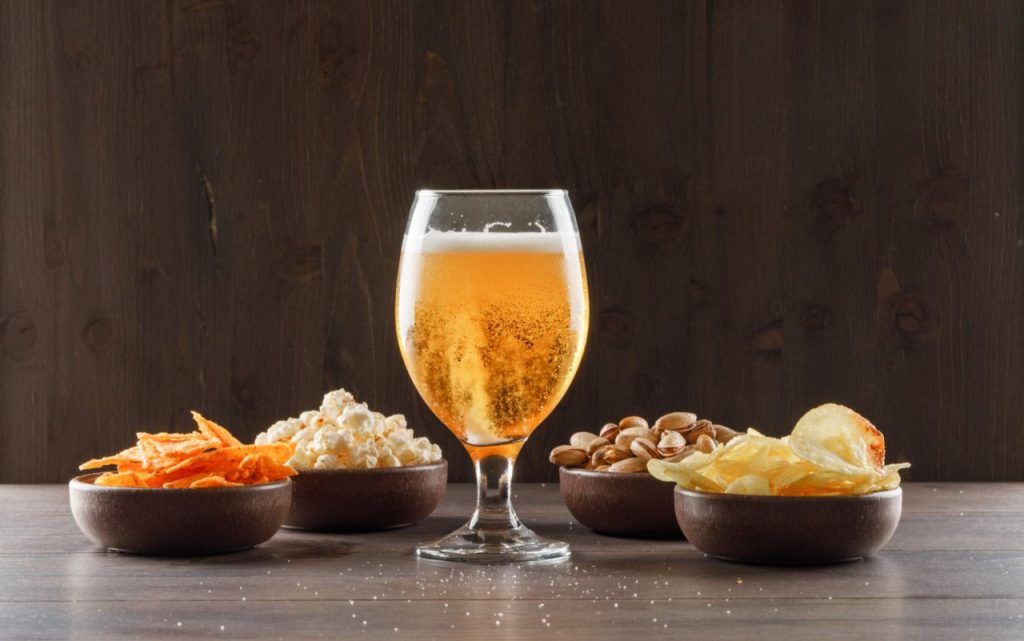
Breweries are generally classified based on their capacity or brewing style. They can range in size from ultra-small to very large, from traditional to innovative or non-traditional. The largest brewery is the Belgian-Brazilian Anheuser-Busch InBev, followed by the Danish Carlsberg group. A nano-brewery is any brewery producing batches of three barrels or less. Brewpubs have the distinct advantage of serving beer directly from the brewery's storage tanks.
A taproom brewery is very similar to a brewpub in that it must sell more than 25% of its beer on-site. Craft breweries, as opposed to microbreweries, are subject to more stringent regulations on the technology used in beer production.
Craft breweries must use at least fifty per cent conventional malt in their beers rather than cereals like oats, barley, and wheat.
They do not wish to engage in competition with more established breweries. Moderate beer consumption is linked to a healthy heart and bones, a lower risk of developing diabetes, and enhanced psychological and cognitive well-being.
A study found that moderate drinkers had a reduced risk of osteoporosis by 38 per cent compared to non-drinkers. Beer consumption has been linked to positive psychological effects, particularly in moderation.
The risk of type 2 diabetes is lowered by 30 per cent when compared to not drinking alcohol at all or drinking heavily. According to a number of studies, it has the potential to assist in the alleviation of stress and anxiety. Beer is a low-strength alcoholic beverage that does not cause as much intoxication as other alcoholic beverages.
This is despite the fact that beer enjoys a widespread reputation as a moderately intoxicating beverage. On hot days, people prefer their beer cool because of its ability to calm and relax them.
Beer is handier not only because of its lower pricing but also due to the significantly lower amount of alcohol that it contains. It is appropriate for individuals' consumption at any hour of the day or night and may be acquired in majority of locations. There are a number of other alcoholic beverages that share many of the same drawbacks as beer.
Excessive beer intake is due to the accumulation of hard fat around the belly region. This can cause an individual to become unfit and result in the development of belly fat. Because beer can be purchased in large quantities at a low cost, a person can develop a dependency on beer.
- According to available data, the top four beer companies control more than half of the market: Anheuser-Busch InBev, SABMiller, Heineken International, and Carlsberg.
- A taproom brewery is very similar to a brewpub in that it must sell more than 25 per cent of its beer on the premises.
- A brewery that only serves beer in a specific part of the country or the world is known as a regional brewery.
- To be considered a craft brewery, a facility must produce no more than 2 million gallons of craft beer annually and be privately held.
- The craft beer brewing industry takes great pride in its high-quality raw materials, reliable equipment, and one-of-a-kind brewing procedures.
- In addition, studies have shown a link between moderate beer consumption (defined as no more than one 12-ounce glass of beer with 5% alcohol by volume a day for women and no more than two glasses of beer a day for men) and a healthy heart and bones, a lower risk of developing diabetes, and enhanced psychological and cognitive well-being.
- So let's raise a glass to the most recent research on the positive effects of moderate beer drinking on one's nutrition and health:
- The elements that make beer all contribute to its unique nutritious profile.
- Beer contains dietary silicon, which is essential for forming and developing bone and connective tissues.
- Dietary silicon may be found in most beers.
- Therefore, it has been hypothesized that the dietary silicon present in beer may be partially responsible for its bone-protective properties.
- Multiple studies have found a link between moderate alcohol use and the risk of type 2 diabetes that is lowered by thirty per cent when compared to not drinking alcohol at all or drinking heavily.
- Beer may boost cognitive and psychological health.
- Research on Parkinson's disease reveals that light to moderate drinking in the middle to late age is related to less cognitive loss than either not drinking at all or heavy drinking.
- Beer consumption has been linked to positive psychological effects, particularly in moderation.
- On the other hand, there is a notion that contradicts this argument and votes for the uniqueness of the taste of beer.
- This notion is that beer has its distinct flavour.
- The amount of alcohol contained within a beer and its overall make-up are factors that help separate one type of beer from another.
- One could say that people's views on beer are split down the middle in society.
- The following are some of the benefits that come along with drinking this specific alcoholic beverage:The majority of beers produced by the many available brands are offered at prices that are friendly to one's wallet.
- Because of this, it is quite inexpensive compared to other alcoholic beverages on the market.
- One common complaint from drinkers who consume alcoholic beverages is that the quantity available is too little for the price they pay.
- The intake of beer is associated with the following negative aspects:
- Excessive beer intake is due to the accumulation of hard fat around the belly region.
- This can cause an individual to become unfit and result in the development of belly fat.
- A possible sign of addiction: Because beer can be purchased in large quantities at a low cost, a person can develop a dependency on beer consumption because they are likely to continue drinking beer even after they have developed a dependency.
- Like any other alcoholic beverage that intoxicates the consumer, beer is responsible for a great deal of social misbehaviour on the part of drinkers.
- Beer drinkers are also responsible for a great deal of public indecency.
FAQ
What is smaller than a micro brewery?
The prefix “nano” means one billionth, which is even smaller than “micro,” or one millionth. A nano brewery is so small that there's actually no defined beer quantity that establishes a brewery as a nano brewery.
What is the difference between micro and nano brewery?
A microbrewery is a brewery that makes less than 15,000 barrels of beer in a year, selling at least 75 percent of it off-site. What is a nanobrewery? A nanobrewery is a smaller microbrewery.
What makes a nano brewery?
The easy definition for a nanobrewery is that it's a brewery or brewpub that produces less than 15,000 barrels of beer per year. The annual caps at the nano level are not quite as defined as the others.
What makes a macro brewery?
The largest types of breweries – sometimes called macro breweries – are the breweries that have an annual production of over six million barrels of beer per year. According to brewery statistics, four companies operate over 50% of the beer market and are considered the largest breweries in the world.
The prefix “nano” means one billionth, which is even smaller than “micro,” or one millionth. A nano brewery is so small that there's actually no defined beer quantity that establishes a brewery as a nano brewery.
A microbrewery is a brewery that makes less than 15,000 barrels of beer in a year, selling at least 75 percent of it off-site. What is a nanobrewery? A nanobrewery is a smaller microbrewery.
The easy definition for a nanobrewery is that it's a brewery or brewpub that produces less than 15,000 barrels of beer per year. The annual caps at the nano level are not quite as defined as the others.

